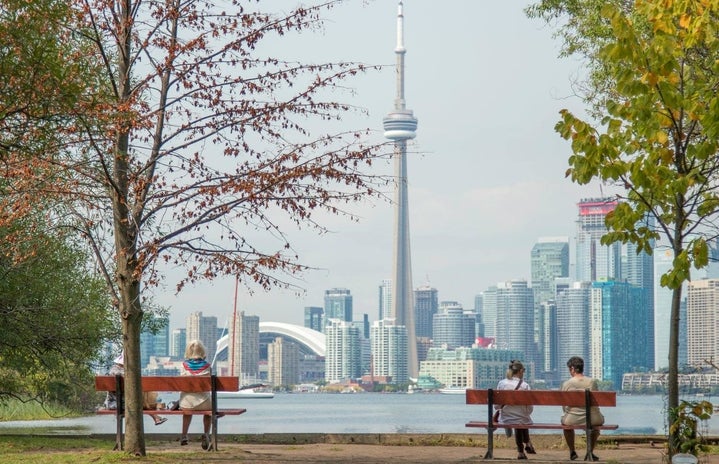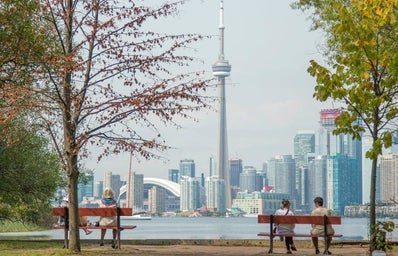Picture this: London, 2019. I am waiting for a tube. I have had something wrong with my legs for over two years now which means that I cannot plant one of my heels to the ground. No idea why. Plus side, my calves are toned from the strange tip-toe way I walk and look completely bomb. Downside, walking on the balls of your feet all day hurts, wreaks havoc on your joints, and my doctor has given me hospital Aircast boots, the kind usually used for sprains and the like, one for each leg, to wear as much as possible. My friend has nicknames for me based around them: Iron Man, Robocop, Cyberman. The quickest way I have found to go downstairs is a kind of underwhelming can-can dance, and I hum the music on descent. The tube station I’m currently at has no benches, or even easy places for me to crouch, but there’s a kind of lean-on wide rail to use, and I test it out without much hope of it being helpful. It’s nicer than straight-up standing, but that benefit is mostly offset by the waves of anger I am biting back that I am not permitted a place to sit down and fully take my weight off my feet, which are currently sweaty, aching and feel like they’re being bitten by many ants with a ferocious vendetta. The reason why this plastic mockery of proper public seating is allowed to exist is due to a concept termed ‘defensive architecture’, or, as I prefer – ‘hostile architecture’. These terms refer to ways of designing structures and areas, especially public spaces, so that they aren’t used outside of their purpose. Anti-pigeon spikes? Hostile architecture. Uncomfortable useless armrests stuck in the middle of benches so it’s hard to lie down? Hostile architecture. Curved slanted seats in bus stops? Hostile architecture. We walk through a world meticulously designed to prevent both pigeons and us from loitering or lying down. However, if you don’t need to sleep on park benches, and don’t have two enormous hospital boots strapped on which are slowly destroying your feet, it is a layer of the world to which you may be oblivious. I, however, have had my quota of spacey medical moon boots, so here’s what I learnt of the universe and its evil benches.
But first, a quick paean to welcoming public areas:
Parks 8/10 – Walking barefoot on grass is one of life’s most gorgeous and gratifying experiences when your feet are battered and exhausted, and the surrounding area is a place where it is acceptably comfortable, and societally acceptable, to fully lie down. Often wet, alas.
Benches in Borough, London 6/10 – For some reason, Borough has some of the best benches around. There’s some with plugs, charging ports and cables (so even if you’ve lost your charger, you’re covered), public WiFi, and a friendly Duolingo bird – God only knows why – to keep you company. They’re solar powered, and although they have the dreaded sticking up armrests, they are still comfy, even if not lying down comfy.
Benches in the Mailbox, Birmingham 9/10 – Sculptural and weird, but no armrests or ridges, and the backs are sloped in such a way that you can lounge and recline. Bliss. Extra points for the general aesthetic environment and being inside under cover. Bit niche, but I wept at seeing them.
Libraries 10/10 – Winning combo of books, comfortable seats, and potential for people watching. Libraries at 11am in the morning attract a wonderfully wide range of people.
Oh, and would you look at that, it’s the end of my list!
And that’s a problem. Especially if we scrape back the layers of privilege I have. My mobility issues are slight in comparison to many. I’m white and female-presenting, which tends to incline people towards sympathy and actions like giving up seats for me. Sometimes, I have visual markers of my physical difficulties in the form of my clunky boots, which make it easier to shame people into giving up their seat and justify why I do occasionally sit in areas reserved for people less able to stand. Here’s the big one: I have a place to stay at the end of the day. Because when my feet are aching and I’m tired and my hips and knees are screaming and my legs don’t work, at least I’ll be home, in a bed, with a blanket, in ten minutes, so it’s fairly bearable. But the concept of looking at a bench, stair, wall or bit of floor designed to hurt you if you linger and knowing that there’s nothing significantly more comfortable awaiting you in the near future is one that produces physical horror in me. Public spaces are not designed for everyone, they are designed, usually, for people planning on moving on in the near future. They are designed to drive people away and don’t particularly care about where they are driving people to. That is why I dislike saying ‘defensive architecture’. Defense against who? And for what? Thank God for spikes outside shops which defend us against *(checks notes)* people lying down. Especially people without dependable access to a bed. ‘Hostile’ shifts the blame away from the users to the inanimate objects that are designed not to function for us.
Artist Stuart Semple (if you don’t know of him, look him up and learn about his battle with artist Anish Kapoor, and prepare to get more invested in different types of black and pink paints than seems likely) pointed this out a few years ago by creating https://hostiledesign.org/, where you can find resources about hostile design, and get stickers which can be placed on architecture to call it a “design crime”. If you’re interested, this is where you can find a ton of helpful resources to learn more. Even if stickers aren’t your thing, then active awareness is eye-opening. Every time you sit on a bench or use a public space – question the design. If you find the awful lean-to benches around, think about who they are supposed to deter, and who gets hurt. If there is a new set of cycle racks where you’ve noticed homeless people sleeping before, ask yourself whether the actual purpose was to make the space unusable for homeless people, and even if not, consider what that says about how local government prioritises those lacking a convenient place to store their bike over those lacking a convenient place to sleep.



